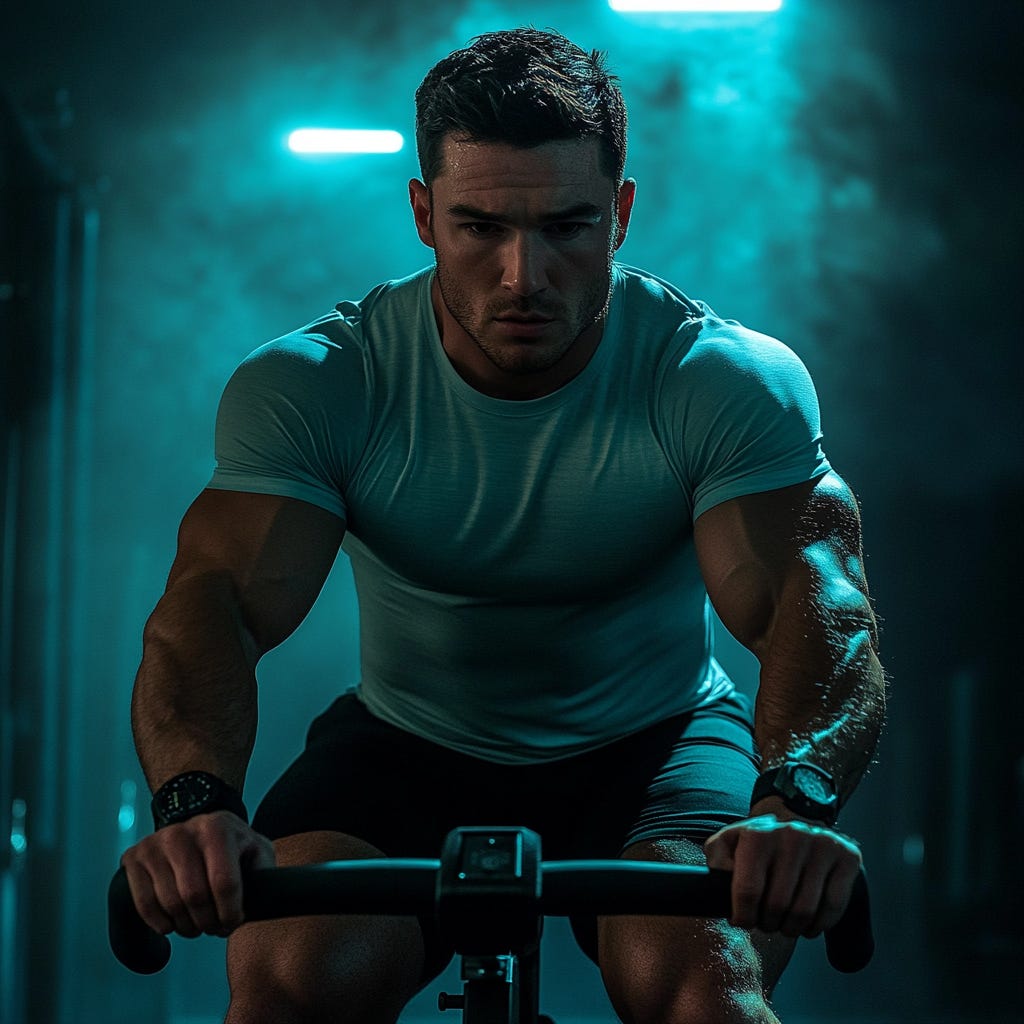Short-Term Aerobic Conditioning Prior To Resistance Training Augments Muscle Hypertrophy
Exploring how aerobic exercise can boost muscle hypertrophy and satellite cell activity during resistance training.
The study "Short-term aerobic conditioning before resistance training augments muscle hypertrophy and satellite cell content in healthy young men and women"(PMID: 35971745) investigated the effects of aerobic conditioning (AC) on muscle adaptations during subsequent resistance training (RT).
Key Points
Objective: To explore how aerobic conditioning influences satellite cell content and muscle hypertrophy in response to resistance training.
Participants: 14 healthy young adults (average age 22 years), both men and women.
Hypothesis: Aerobic conditioning would enhance muscle capillarization, thereby improving satellite cell activation and muscle hypertrophy during resistance training.
Methods
Study Design:
Participants underwent 6 weeks of unilateral aerobic conditioning (AC) using a specially adapted exercise bike, followed by 10 weeks of bilateral resistance training (RT).
Aerobic Conditioning Protocol:
Participants engaged in 45 minutes of progressively difficult cycling three times a week for six weeks.
Resistance Training Protocol:
After a two-week break post-AC, participants performed RT targeting thigh muscles for 10 weeks. They received whey protein supplements with leucine after each session to support muscle protein synthesis.
Measurements:
Muscle biopsies were collected at three points: baseline (unilateral), post AC (bilateral), and post RT (bilateral).
Techniques used included immunofluorescence to assess:
Muscle capillarization
Cross-sectional area (CSA) of muscle fibers
Satellite cell content and activity
Results
Muscle Hypertrophy:
Both type I and type II fiber CSA increased following RT.
The AC + RT leg showed greater increases in type I, type II, and mixed-fiber CSA compared to the RT-only leg.
Satellite Cells:
Total and quiescent satellite cell content was significantly higher in the AC + RT leg compared to the RT leg.
Increased SC activation and differentiation were noted with RT.
Capillarization:
A significant relationship was found between capillary-to-fiber perimeter exchange index before RT and the change in CSA after RT.
Specifically, type II fiber capillarization correlated with changes in type II fiber CSA (r = 0.35).




